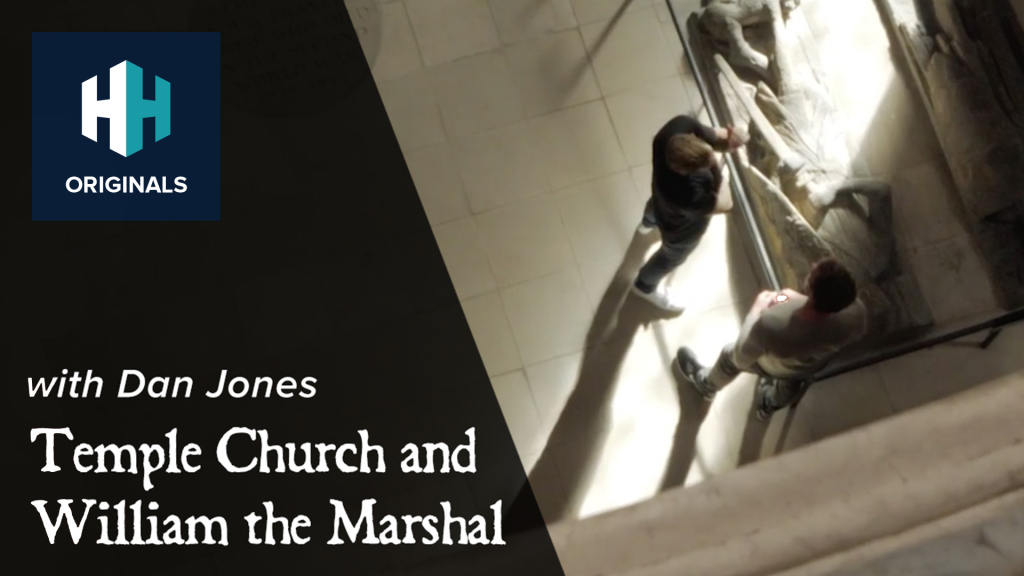
Born in either 1146 or 1147, William Marshal – also known as ‘the Marshal’ after his family’s hereditary ceremonial role of holding responsibility for the royal stables – was among the preeminent statesmen and soldiers of the medieval period in England.
Serving five kings in various capacities throughout his life, Marshal expertly negotiated the political landscape of a tumultuous period in English history. Here are 10 facts about him.
1. He was held hostage as a child
Due to his father’s support of Empress Matilda during the period known as The Anarchy, the young Marshal was taken hostage by Matilda’s rival King Stephen. Stephen’s forces threatened to kill the boy if his father, John Marshal, did not surrender Newbury Castle, which was under siege.
John did not accept, but rather than being murdered Marshal remained a hostage for several months. He was finally released due to the cessation of hostilities with the Treaty of Wallingford in 1153.
 Watch Now
Watch Now2. In his youth he was a tournament champion
Marshal grew up in both England and France, where his family held land. Knighted in 1166, he attended his first tournament a year later, before joining the service of Eleanor of Aquitaine.
Recalling later in life that he had bested 500 men over the course of his tournament career, Marshal became a legendary champion, competing in violent staged battles for prize money and fame.
3. He tutored the Young King, before being accused of having an affair with his wife
Eleanor’s son with Henry II was Henry the Young King, who was crowned during the reign of his father and never ruled in his own right. Marshal served as the Young King’s tutor and confidante beginning in 1170, and they fought together in several tournaments.

The effigy of Eleanor of Aquitaine. Marshal served Eleanor, her husband Henry II, and her three sons Henry the Young King, Richard I, and John.
In 1182 however, Marshal was rumoured to have had an affair with the Young King’s wife, Margaret of France. While the accusations were never proven, Marshal left the Young King’s service in early 1183
4. He went on crusade
Marshal and the Young King had reconciled by the latter’s death, and Marshal vowed to his former pupil that he would take up the cross in his honour. Little is known about the two years Marshal subsequently spent in the Holy Land on crusade, but he certainly sailed for Jerusalem in the winter of 1183.
Marshal returned to England in either 1185 or 1186, joining the court of Henry II in the final years of the latter’s reign.
5. He fought and almost killed Richard the Lionheart
Following the death of the Young King, Henry II’s younger son Richard became heir to the English throne. Henry and Richard had a turbulent relationship, including Richard opposing his father and fighting for the French king, Philip II.
In a skirmish between Henry and Philip’s forces, Marshal unseated the young Richard and had the opportunity to finish the future king. Marshal instead chose clemency, and claimed to be only man to have ever bested Richard in combat.
6. He married into money
As a younger son, Marshal had not inherited his father’s land or wealth. This was remedied in August 1189 however, when the 43 year old Marshal married the 17 year old daughter of the wealthy Earl of Pembroke.
Marshal now had the land and money to match his status as one of the most powerful and influential statesmen in the kingdom. He would subsequently be granted the title of Earl of Pembroke himself in 1199, after the death of his father in law.
 Listen Now
Listen Now7. He later served as a loyal retainer of Richard I, despite their earlier quarrels.
When Richard became king, he spent little time in England, instead campaigning in France and the Middle East on crusade.
In the king’s absence, Marshal was named to serve on the council of regency, which governed England in place of the monarch. When Richard died in 1199, he made Marshal the custodian of the royal treasure, as well as granting him new titles in France.
8. He had a turbulent relationship with King John
Marshal then served under Richard’s brother King John, but the pair often failed to see eye to eye. Despite Marshal supporting John’s claim to the throne, a dispute over Marshal’s estates in France led to him being publicly humiliated by the king.

John was an unpopular king, and his relationship with Marshal was occasionally volatile. Credit: Dulwich Picture Gallery
Marshal nevertheless sided with John during the latter’s hostilities with his barons, and accompanied John to Runnymede to sign the Magna Carta on 15 June 1215.
9. He served five kings, ending with Henry III
John died in 1216, and Marshal’s final royal posting was to serve as the protector for John’s young son, King Henry III. In Henry’s name, Marshal fought a series of campaigns against the future Louis VIII of France, including leading the charge at the Battle of Lincoln in 1217, despite being over 70 years old.
After the successful conclusion of the conflict with Louis, Marshal negotiated a lenient peace treaty, which he saw as crucial to preserving peace. Despite facing criticism for the generous terms he offered the French, Marshal nevertheless assured stability for his young ruler, who would go on to reign for over 55 years.
10. He is buried in the heart of London
By the spring of 1219 Marshal’s health was failing, and he died at Caversham on 14 May. Having joined the order of the Knights Templar on his deathbed – a promise he allegedly made on crusade – he was buried in Temple Church in London.
 Listen Now
Listen Now













